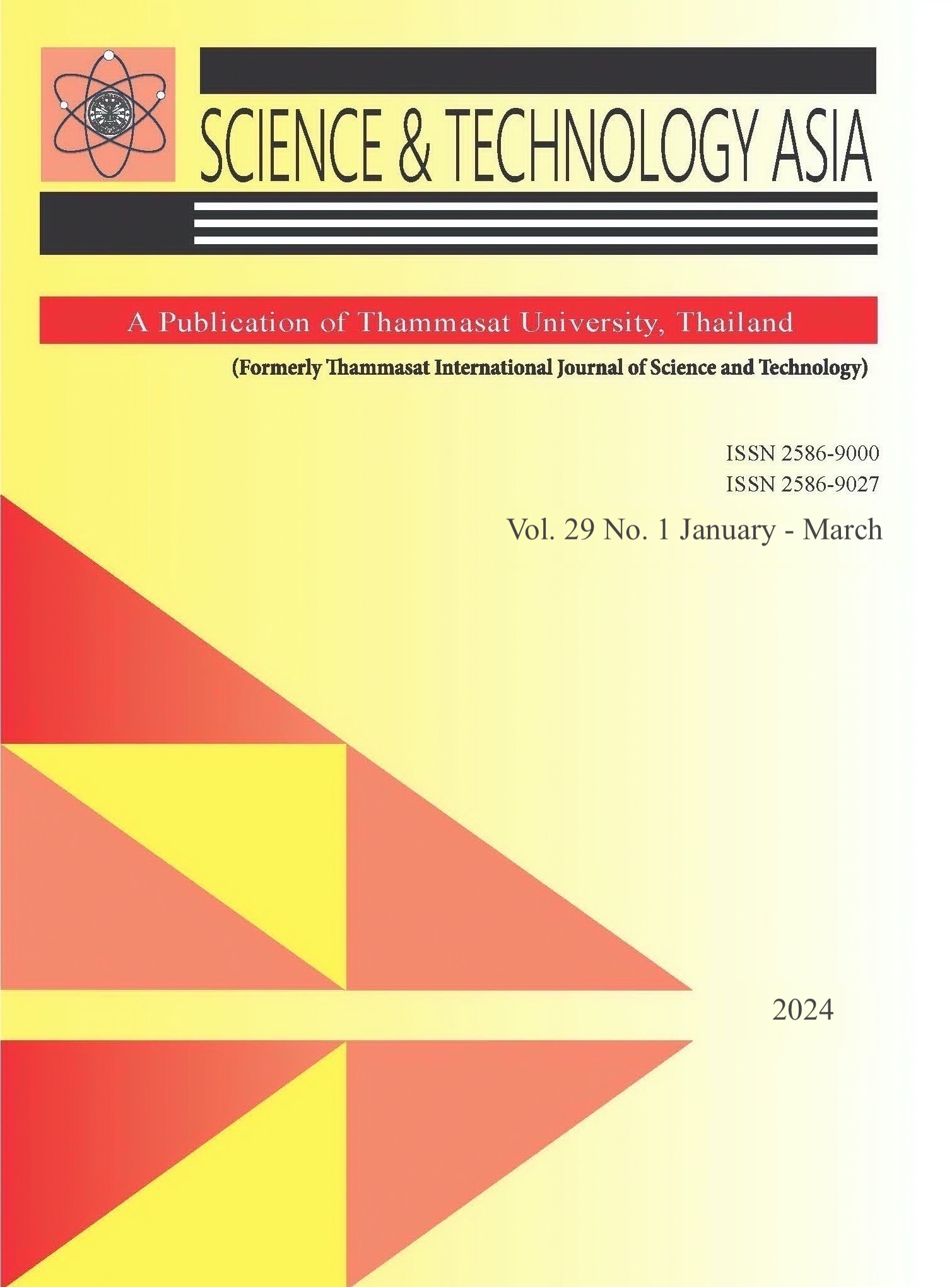Synchronous Colonic Neuroendocrine Tumor and Adenocarcinoma: A Case Report with Literature Review
Main Article Content
Abstract
Multiple primary malignancies are categorized as synchronous and metachronous tumors, depending on the different rules of international institutions. The synchronous occurrence of a colonic neuroendocrine tumor with adenocarcinoma is rare. We present a case involving a synchronous colonic neuroendocrine tumor and adenocarcinoma. Our patient is a 68-year-old male with a positive stool occult blood test from a check-up examination. A biopsy of an unknown location from a colonoscopy revealed a moderately differentiated adenocarcinoma. His whole-abdominal computed tomography (CT) scan showed focal eccentric thickening with solid enhancement of the hepatic flexure colon. The patient underwent a right hemicolectomy. Macroscopic examination revealed an ulceroproliferative mass at the hepatic flexure and a submucosal mass at the cecum. The mass at the hepatic flexure exhibited villous, back-to-back, and cribriform glands composed of columnar cells with some tumor cells floating in extracellular mucin that were positive for CK20 and CDX2 immunostaining, diagnosed as a well-differentiated adenocarcinoma with mucinous features. The mass at the cecum revealed nest, trabecular, and glandular patterns of monotonous cuboidal to polygonal cells that tested positive for synaptophysin, chromogranin A, and CDX2 immunostaining, diagnosed as a well-differentiated neuroendocrine tumor. Many hypotheses have been proposed regarding the pathogenesis of neuroendocrine neoplasms with other primary malignancies. In our opinion, a genetic abnormality of common cell origin might be one of the possible etiologies of our case due to the common endodermal origin and the positivity of CDX2. We recommend that close surveillance for synchronous tumors in patients with colorectal neuroendocrine tumors might be helpful.
Article Details

This work is licensed under a Creative Commons Attribution-NonCommercial-NoDerivatives 4.0 International License.
References
Program S. The SEER Program code manual: Third edition, Jan. 1998. [Bethesda, Md.?] : Cancer Statistics Branch, Surveillance Program, Division of Cancer Control and Population Sciences, National Cancer Institute, National Institutes of Health, Public Health Service, U.S. Dept. of Health and Human Services, 1998.; 1998.
Tyczynski JE, Démaret E, Parkin DM. Standards and Guidelines for Cancer Registration in Europe: International Agency for Research on Cancer; 2003.
Edge SB. AJCC cancer staging manual 8th ed. 8th ed. American Joint Committee on C, editor. New York: Springer; 2017.
Tichansky DS, Cagir B, Borrazzo E, Topham A, Palazzo J, Weaver EJ, et al. Risk of second cancers in patients with colorectal carcinoids. Dis Colon Rectum. 2002;45(1):91-7.
Habal N, Sims C, Bilchik AJ. Gastrointestinal carcinoid tumors and second primary malignancies. J Surg Oncol. 2000;75(4):310-6
Brown NK, Smith MP. Neoplastic diathesis of patients with carcinoid. Report of a case with four other neoplasms. Cancer. 1973;32.
Rivadeneira DE, Tuckson WB, Naab T. Increased incidence of second primary malignancy in patients with carcinoid tumors: case report and literature review. J Natl Med Assoc. 1996;88(5):310-2.
Parra-Medina R, Moreno-Lucero P, Jimenez-Moreno J, Parra-Morales AM, Romero-Rojas A. Neuroendocrine neoplasms of gastrointestinal tract and secondary primary synchronous tumors: A systematic review of case reports. Casualty or causality? PLoS One. 2019;14(5):e0216647.
Saha S, Hoda S, Godfrey R, Sutherland C, Raybon K. Carcinoid tumors of the gastrointestinal tract: a 44-year experience. South Med J. 1989;82(12):1501-5.
Lancellotti F, Solinas L, Telesco D, Sagnotta A, Belardi A, Balsamo G, et al. A rare case of metachronous neuroendocrine tumor after a colorectal adenocarcinoma: qualitative critical review of synchronous and metachronous gastrointestinal NET. Clin J Gastroenterol. 2021;14(1):115-22.
Shenoy S. Gastrointestinal carcinoids and colorectal cancers: is it a paracrine effect? Tumori. 2013;99(4):e141-3.
de Santa Barbara P, van den Brink GR, Roberts DJ. Development and differentiation of the intestinal epithelium. Cell Mol Life Sci. 2003;60(7):1322-32.
Andrew A, Kramer B, Rawdon BB. The embryonic origin of endocrine cells of the gastrointestinal tract. General and Comparative Endocrinology. 1982;47(2):249-65.
Cox WF, Jr., Pierce GB. The endodermal origin of the endocrine cells of an adenocarcinoma of the colon of the rat. Cancer. 1982;50(8):1530-8.
Goldenberg DM, Fisher ER. Histogenetic relationship between carcinoids and mucin-secreting carcinomas of colon as revealed by heterotransplantation. Br J Cancer. 1970;24(3):610-4.
] La Rosa S, Rigoli E, Uccella S, Chiaravalli AM, Capella C. CDX2 as a marker of intestinal EC-cells and related well-differentiated endocrine tumors. Virchows Arch. 2004;445(3):248-54.
Barbareschi M, Roldo C, Zamboni G, Capelli P, Cavazza A, Macri E, et al. CDX-2 homeobox gene product expression in neuroendocrine tumors: its role as a marker of intestinal neuroendocrine tumors. Am J Surg Pathol. 2004;28(9):1169-76.
Beck F. Homeobox genes in gut development. Gut. 2002;51(3):450-4
Yang MX, Coates RF, Ambaye A, Cortright V, Mitchell JM, Buskey AM, et al. NKX2.2, PDX-1 and CDX-2 as potential biomarkers to differentiate well-differentiated neuroendocrine tumors. Biomark Res. 2018;6:15.
Srivastava A, Hornick JL. Immunohistochemical staining for CDX-2, PDX-1, NESP-55, and TTF-1 can help distinguish gastrointestinal carcinoid tumors from pancreatic endocrine and pulmonary carcinoid tumors. Am J Surg Pathol. 2009;33(4):626-32.
Lin X, Saad RS, Luckasevic TM, Silverman JF, Liu Y. Diagnostic value of CDX-2 and TTF-1 expressions in separating metastatic neuroendocrine neoplasms of unknown origin. Appl Immunohistochem Mol Morphol. 2007;15(4):407-14.
Jaffee IM, Rahmani M, Singhal MG, Younes M. Expression of the intestinal transcription factor CDX2 in carcinoid tumors is a marker of midgut origin. Arch Pathol Lab Med. 2006;130(10):1522-6.


